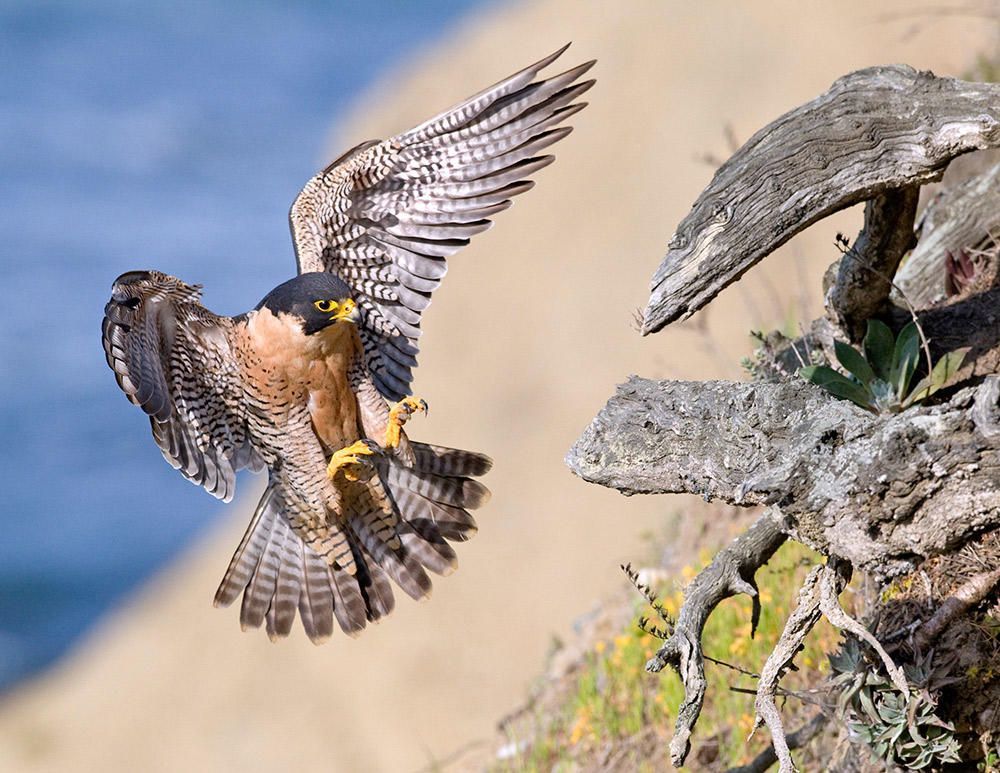Tuleyome's Science Corner: Peregrine Falcons

Peregrine Falcon (Falco peregrinus) by Stan Keiser/Audubon Photography Awards)
Fast.
That’s the first thing that I learned about Peregrine Falcons (Falco peregrinus) and indeed, they are one of the world’s fastest birds. If you are quick enough, you may see these birds in Berryessa Snow Mountain National Monument or the surrounding region.
Peregrine’s reach their top speed when diving onto their flying prey from high above. This attack allows these relatively small raptors to take prey that is much larger than they are. However, Peregrines may also chase prey while flying level or even when flying very low, close to the ground or water.
Birds are a Peregrine’s favorite and most common prey. In cities, pigeons make up the majority of their diet while ducks and shorebirds are favored along the coast. Birds as small as songbirds and and as large as loons, geese, and large gulls are not safe when a Peregrine is hungry. If a bird is hard to find or capture, Peregrines will eat some small mammals or settle for insects.
The preferred nesting sites are usually on a cliff ledge, but pairs will settle for a hollow broken-off tree or use an old stick nest from another large bird. In cities, tall buildings and bridges replace cliffs. Pairs mate for life and defend the immediate nest area but hunt over a large area. Some nest sites are used for many years.
Females lay 3 or 4, whitish eggs marked with warm brown spots. She incubates the eggs for about a month while her mate brings her food. After the eggs hatch, both parents bring food the young. After 40 to 50 days, the young are ready to take their first flight. The National Geographic show, Super/Natural has a great feature on how adult Peregrines teach their kids how to hunt.
During the 1940s to the 1970s, pesticide concentrations in the prey heavily impacted the reproductive ability of Peregrines causing their populations to disappear from some areas. Although current populations appear to be stable, climate change models have shown that these birds will be impacted by moving their range northward.
More information about Peregrine Falcons is available via the Audubon Society. California Department of Fish & Wildlife produced a map that shows the nesting territories of Peregrine Falcons from 1953 to 2017. There are multiple territories in the Berryessa Snow Mountain National Monument region and the Molok Luyuk (Condor Ridge/Walker Ridge) area.
-Nate Lillge (nlillge@tuleyome.org)
Tuleyome Adventures and Engagement Director
Certified California Naturalist
RECENT ARTICLES






